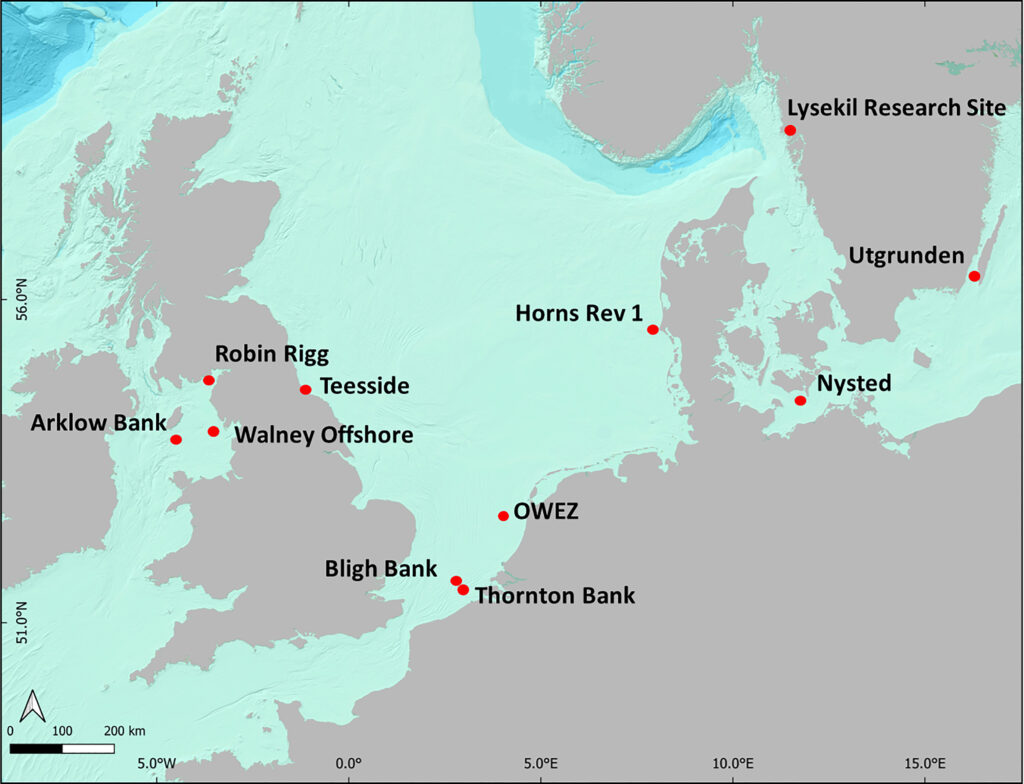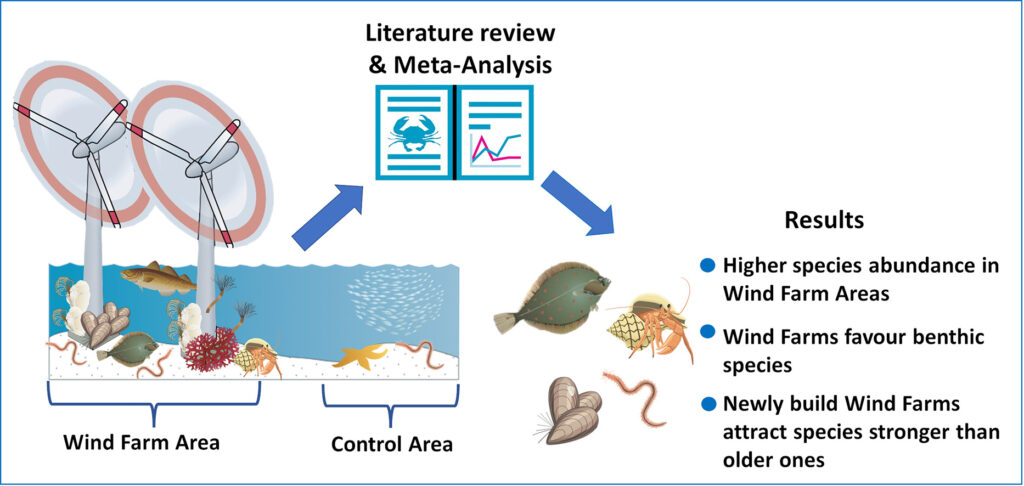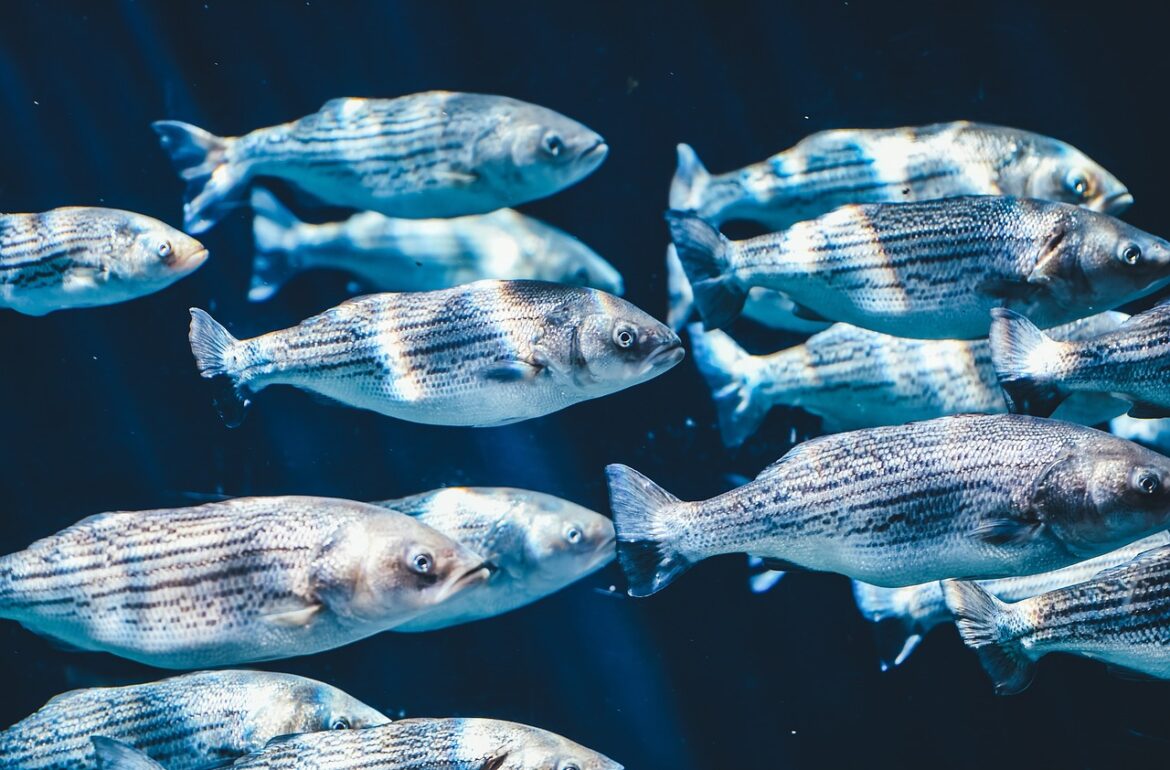Collaborative research between scientists in the University of Tartu in Institute of Ecology and Earth Sciences and the Senckenberg Research Institute reveals that in their starting years, offshore wind farms are favourable habitats for biota – as a rule of thumb, the number of species living on and around wind turbines is larger than in areas bordering the wind farms. This creates the impression that offshore wind farms function as a sort of nature preserve. However, offshore wind turbines are a relatively new phenomenon and their long-term effects are unknown.
Offshore wind farms have been built for more than 30 years and we know that the underwater part of a turbine serves as a habitat for organisms. Previous studies on wind farm biota have been location-based or focused on a specific group of organisms, so it has not been possible to make generalisations based on them. Although the dominant opinion in scientific literature is that offshore wind farms promote underwater biota, the effect they have is still dependent on location and the state of the population before the wind farm was built. In addition to attached biota, we also have to pay attention to changes in habitats on the sea floor – changes in the sediments can take much longer than changes on the foundation of a turbine.
The researchers worked through 447 studies, from which 14 studies conducted in 11 wind farms in the North, Irish and Baltic Sea were deemed relevant. In total, they analysed data concerning 124 species. Most numerous among them were demersal fish, polychaetes (bristle worms) and crustaceans.

Although there was no significant statistical difference among specific species between the wind farm and the control area, the species in the wind farm were significantly more numerous: there were more polychaetes, echinoderms (starfish and sea urchins) and demersal fish in the wind farm. The age of the wind farm had an effect on its biota as well – the differences were greater between newly built wind farms and the control area and they decreased as the wind farm aged.
A wind farm is an artificial reef that many organisms attach to. There is plenty of food there, which causes the local biodiversity to grow. It can also function as a sort of distribution hub, from where species spread to the surrounding areas. First, the foundation of a wind turbine will be covered by invertebrates, which are food for larger organisms such as fish and birds. The attached biota will create new conditions in the wind farm, which promotes richer biodiversity than before. The new area can be a favourable habitat and shelter for the juveniles of many species.
From a socio-economic perspective, the most noteworthy aspect of a wind farm is the positive effect it has on fish populations – it is important to know whether the biomass of fish in wind farms is larger, meaning that those are areas where fish grow vigorously or if they are just spots that attrackt fish from surrounding areas, which would cause fishing opportunities in industrial fishing areas to decrease.
Both options are possible and not mutually exclusive. Since fishing is prohibited in wind farms, they function as safe areas for fish, which may raise the question of whether wind farms should be built on marine protected areas. Bottom trawling could be one of the reasons for lower biodiversity in the control areas. As a rule of thumb, all kinds of fishing are prohibited in wind farms, and that could be the reason for the increase in the number of demersal fish. Since bottom trawling is destructive for all biota, it being prohibited is helpful for all other life forms on the sea floor as well.

Although the research results show that wind farms have a favourable effect on biodiversity, the authors emphasise that this should not be interpreted as a success story, because the impact of the electromagnetic field and noise caused by a wind farm are unknown, and could negatively impact an animal’s physiology, behaviour and fertility.
Wind farms can also encourage arrival and survival of non-native species, which can pose a threat to local wildlife. The construction of wind farms in shallow see can be destructive for fish spawning grounds and large-scale disturbance of sediments can impact areas far away from the wind farms. The wind turbines can also leak toxic waste into the surrounding sea water. It is also important to keep in mind that colonisation can happen in waves and the full impact may not be evident in the early years of the wind farm. The longest of the studies included in the analysis was only 11 years long, which is rather short in terms of changes in the ecosystem. Long-term studies using the same methodology are necessary to identify the impact.
According to Randel Kreitsberg, growing biodiversity in itself is not an indicator of quality. “Oligotrophic lakes for example are also species-poor, but they provide a habitat for species that cannot survive elsewhere. The same goes for shallow see, which can be poorer than wind farms in terms of biomass and number of species, but which are important spawning grounds and habitats for species that wind farms would not be suitable for. The study is a rational overview that shows us one of the many effects of wind farms, but there are many more arguments both for and against them to consider.”
The research paper reference: Beneath the blades: Marine wind farms support parts of local biodiversity – a systematic review
This article is writteb by Marko Mägi. It was originally published on the “ZOOLOGISTS 2.0” blog.
If fish fascinate you and the mysteries of the deep call to you, swim over to our webpage for more info about how Baltic Sea pollution puts fish cancer defenses to the test!
 Back
Back



